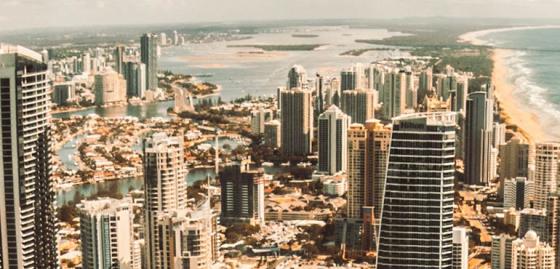Building classes—Building Codes of Australia
A classification summary of buildings and structures under the National Construction Code (NCC).

All building work must comply with the requirements of the Building Code of Australia (BCA).
The Building Code of Australia (BCA) is contained within the National Construction Code (NCC) and provides the minimum necessary requirements for safety, health, amenity and sustainability in the design and construction of new buildings (and new building work in existing buildings) throughout Australia.
In doing so, it groups buildings by their function and use. These groups are assigned a classification which is then how buildings are referred to throughout the NCC. These groups are summarised below.
Houses or dwellings of a domestic or residential nature—single or horizontally attached to other Class 1 buildings such as terrace houses, row houses, or townhouses.
In these situations they must be separated by a wall that has fire‑resisting and sound insulation properties. 2 subclasses include:
- class 1a—is a single dwelling being a detached house; or one of a group of attached dwellings being a town house, row house or the like.
- class 1b—is a boarding house, guest house or hostel that has a floor area less than 300 m2 , and ordinarily has less than 12 people living in it. It can also be four or more single dwellings located on one allotment which are used for short-term holiday accommodation.
Apartment buildings—residential buildings containing two or more sole-occupancy units where people live above, beside or below each other.
Class 2 may also be single storey attached dwellings where there is a common space below such as a basement or carpark.
A residential building, other than a Class 1 or 2 building, which is a common place of long term or transient living for a number of unrelated persons, such as:
- boarding-house
- hostel
- backpackers accommodation
- residential part of a hotel, motel, school or detention centre.
Class 3 buildings could also include dormitory style accommodation, or workers’ quarters for shearers or fruit pickers.
Class 3 buildings may also be “care-type” facilities such as accommodation buildings for children, the elderly, or people with a disability, and which are not considered to be Class 9 buildings.
Shops, restaurants and cafés—places for the sale of retail goods or the supply of services direct to the public, such as:
- dining room, bar, shop or kiosk part of a hotel or motel
- hairdresser or barber shop
- public laundry
- market or showroom
- funeral parlour
- shopping centre.
Buildings including carparks, warehouses or storage buildings. This class includes two sub-classifications:
- class 7a—carparks
- class 7b—warehouses, storage buildings or buildings for the display of goods (or produce) that is for wholesale.
Public buildings—with three sub-classifications:
- class 9a—healthcare buildings such as hospitals and day surgery clinics
- class 9b—buildings where people assemble for social, political, theatrical, religious or civic purposes, e.g. churches, schools, universities, sports facilities, night clubs
- class 9c—aged care facilities.
Non-habitable buildings or structures. This class includes three sub classifications:
- class 10a—non-habitable buildings including sheds, carports, and private garages.
- class 10b— structures such as fence, mast, antenna, retaining wall, swimming pool
- class 10c—private bushfire shelter associated with, but not attached to, a class 1a building.
What type of building is it?
Details of building classes included in the builder scope of works.


